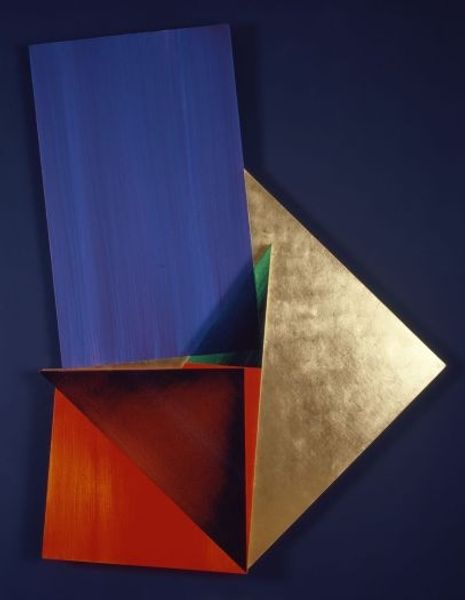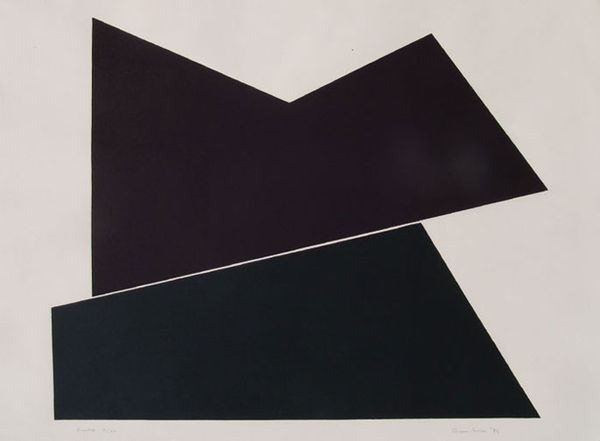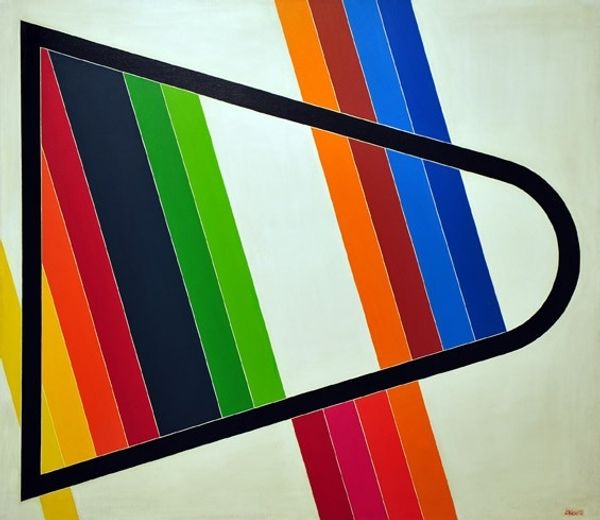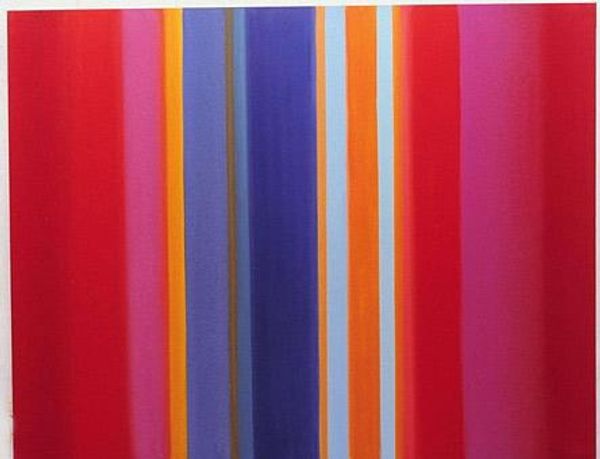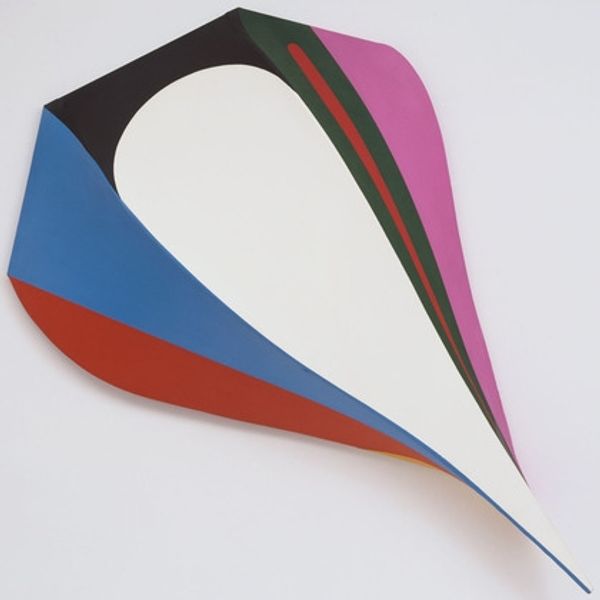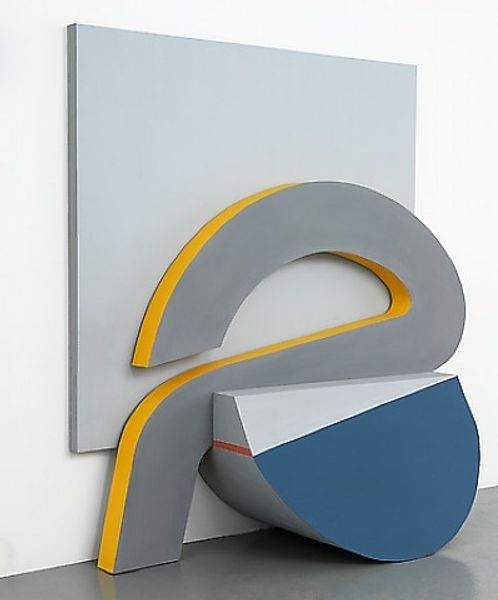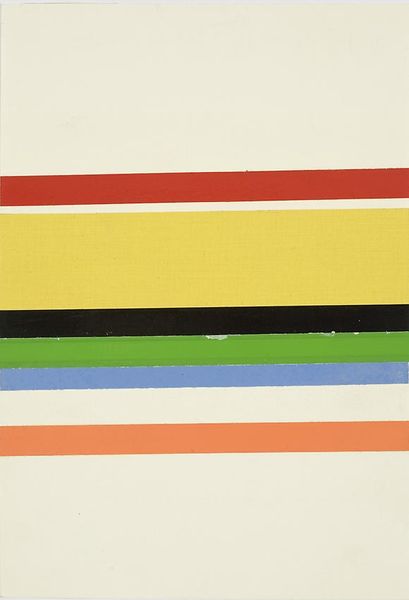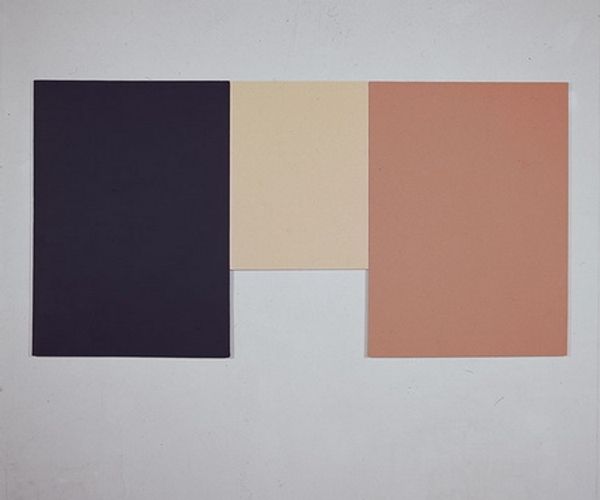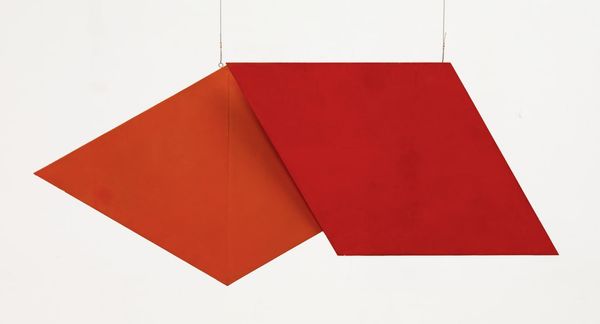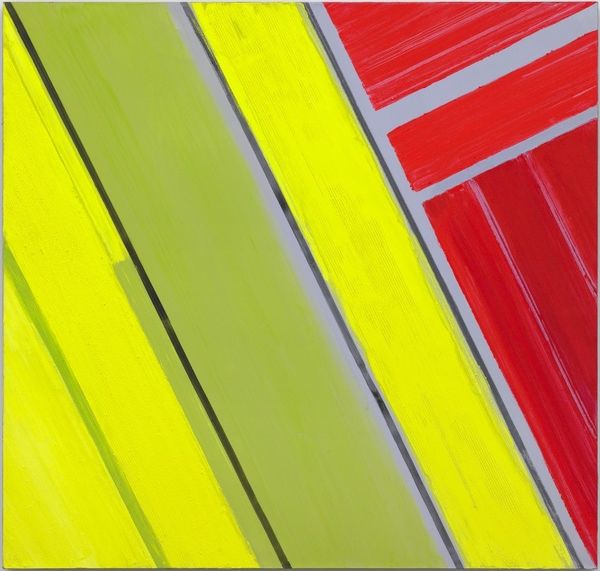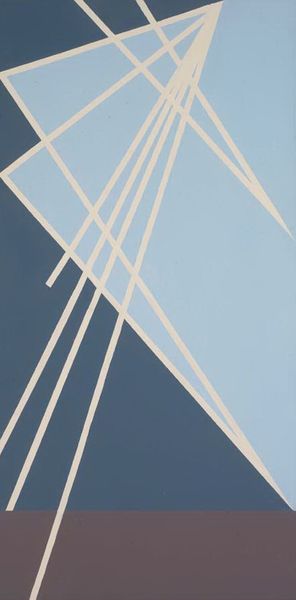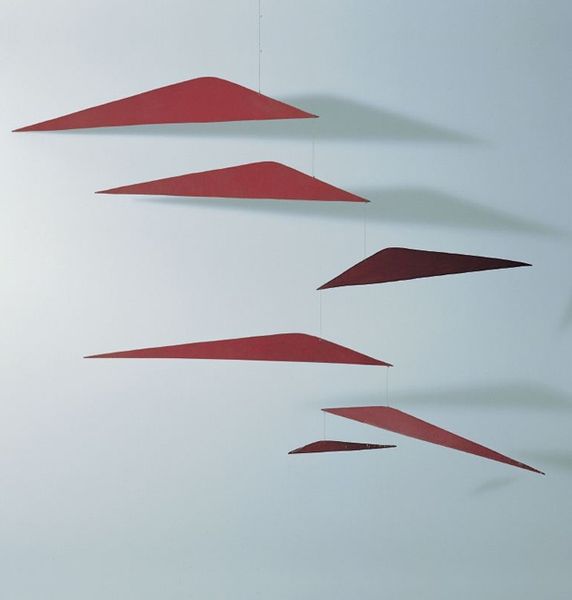
acrylic-paint, paper
#
abstract-expressionism
#
minimalism
#
geometric composition
#
minimal geometric
#
acrylic-paint
#
paper
#
form
#
geometric
#
hard-edge-painting
Copyright: Thomas Downing,Fair Use
Curator: Looking at "Twenty" by Thomas Downing, painted in 1968, a series of colorful chevrons in acrylic on paper command attention. Editor: They do indeed! My immediate reaction is how dynamic the color palette feels—it's almost unsettling how close yet discordant each shade seems to be, like the layering has an ominous intention. Curator: Downing was deeply embedded within the Washington Color School movement; his pieces frequently embraced simplified form. In this image, he clearly focuses on geometrical construction while inviting us to reflect on the intrinsic qualities of tone and plane within that structure. We can link this work to dialogues around minimalism. Think of what movements or societal forces underpinned artistic decisions. Editor: Absolutely. These stacked geometric forms resonate deeply with Hard-Edge Painting. It begs the question whether the socio-political context shaped this aesthetic embrace of flat color and non-illusionistic form. What statements were artists trying to convey when traditional, representational norms were being vehemently pushed aside in art spaces and places of representation? Curator: The arrangement and tone create a sense of layered dimensionality. This was not merely decoration. Post-war abstraction sought, often unconsciously, to embody a fresh societal structure through material and aesthetic expression. There's something powerful in the stark shapes and deliberately flattened perspective. Editor: Yes, in an era of political and social turbulence—race riots, anti-war protests, burgeoning feminist movements—Hard-Edge painting arguably offered artists an escape into aesthetic autonomy. But perhaps we must question whether any art can ever truly escape political meaning. Can this move toward abstraction perhaps speak to an avoidance of very heated social realities? Or conversely, can we examine if its bold use of pure colour be construed to project an unyielding certainty amidst chaos and change? Curator: That's a fascinating challenge. The image asks us to reconsider traditional approaches to representation. Editor: Undoubtedly. Works like this act as cultural artefacts. They prompt necessary interrogations about identity and history in art’s evolution. This piece gives an interesting historical counterpoint about form and the era.
Comments
No comments
Be the first to comment and join the conversation on the ultimate creative platform.

